Best scooters for kids and adults reviewed
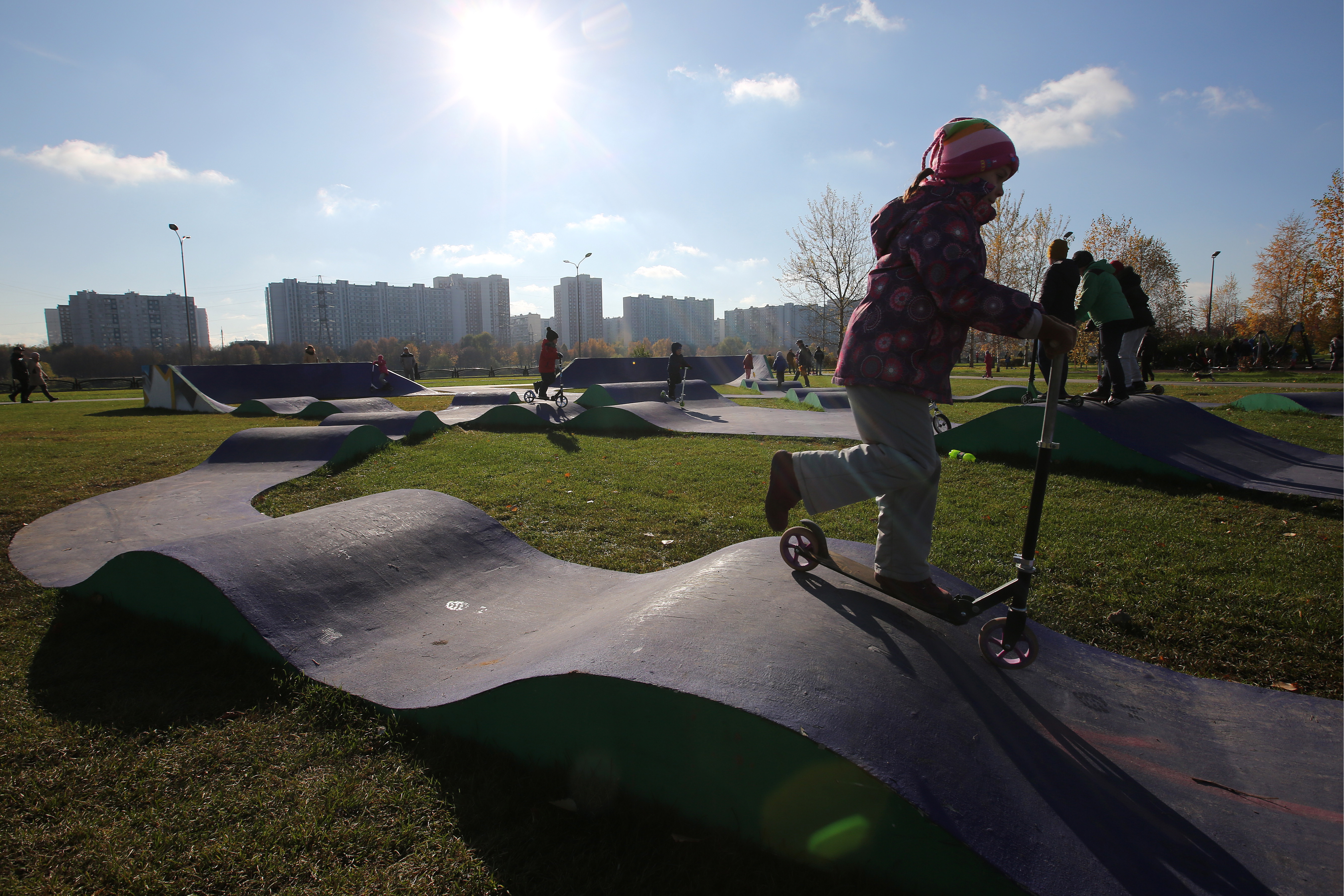

Scooters are a great way to help children keep active whilst developing balance, co-ordination and confidence. And, they certainly speed up journeys for kids, the adults accompanying them - and even for commuting big kids getting about the city!
You can pick up a kids' scooter for as little as £20. However, top end models can come in closer to £100. For your extra money, you'll get a lighter design that's more robust.
As in kids' bikes, weight is hugely important - a child's weight is a fraction of an adults, so the equipment's heft will be a larger percentage of their own.
Scooters can have either two or three wheels. The three wheel options are more stable, and safer for younger children and toddlers.
Adult scooters can be purchased for £50, but prices again will increased as designs become more robust, folding mechanisms more slick and better braking is introduced on sportier models.
The handlebar height will be adjustable, it needs to be set correctly, to ensure good visibility and rule out the risk of slipping over the front. A handlebar at the correct height will be between the user's stomach and chest.
We've rounded up five kids' scooter models we rate, given a parents account on the buying experience, and taken a look at options for adults...
With each product is a ‘Buy Now’ or ‘Best Deal’ link. If you click on this then we may receive a small amount of money from the retailer when you purchase the item. This doesn’t affect the amount you pay.
Five kids scooters we rate
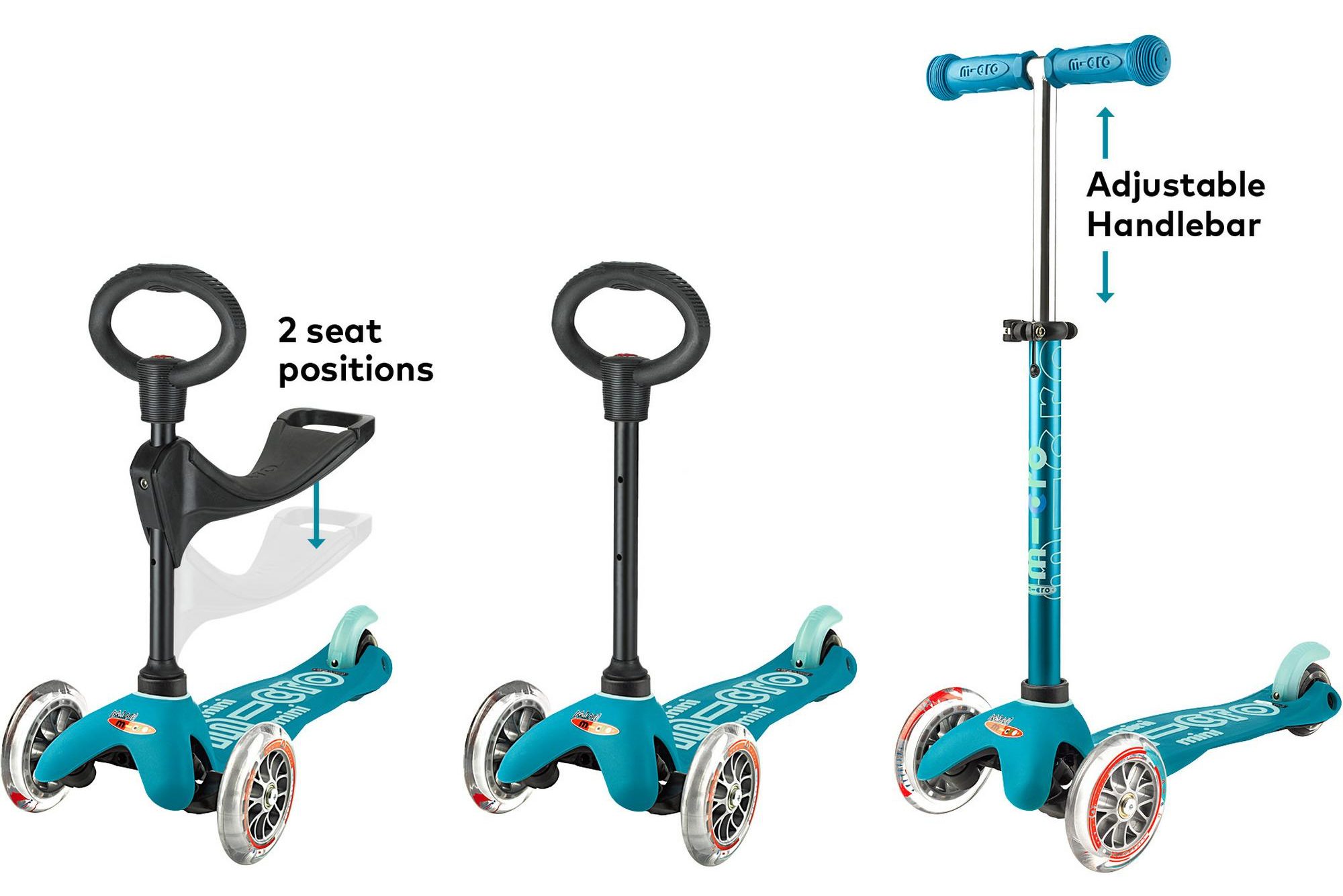
3 in 1 Micro Mini Deluxe Aqua Kids Scooter
Reasons to buy
Reasons to avoid
Swiss scooter giants Micro were on to a smart idea with the 3 in 1. This adjustable scooter can be reconfigured to suit kids' from 12months+, to 5 years. At a young age, they have a seat, then an 'O' ring which will teach them better control before they progress to a T-bar.
Without the seat, the scooter weighs 1.5kg, it has PU wheels which can't puncture, and the bar height ranges from 43cm to 58cm.
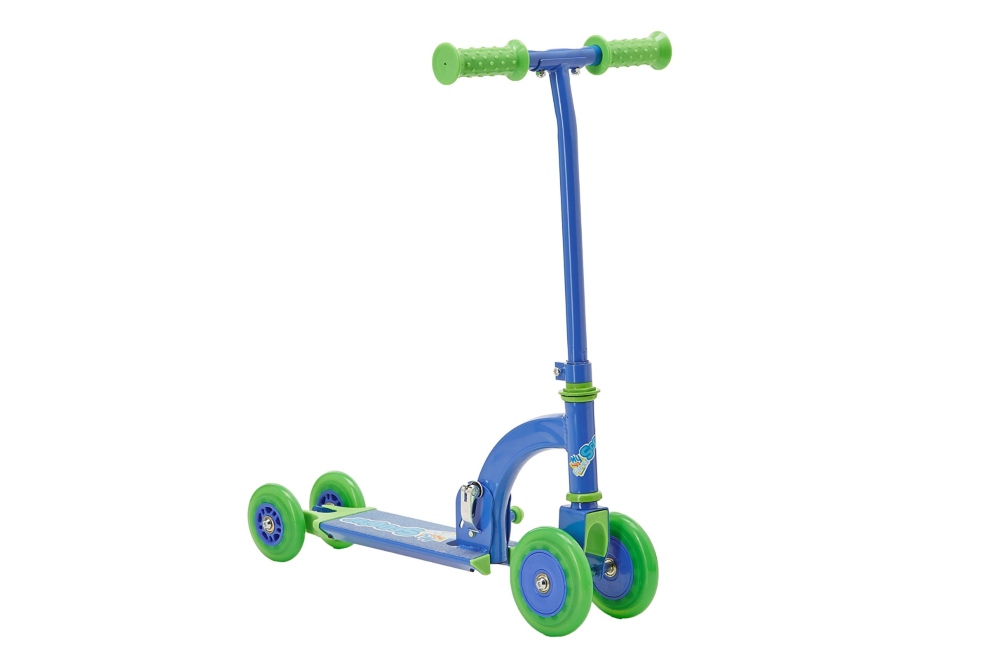
Ozbozz My First Scooter
Reasons to buy
Reasons to avoid
This is a great option if you want to keep the spend lower, and provide added stability for younger kids.
Rather handily, the wheels can be swapped around so that it can be ridden with four, three or two wheels as confidence grows.
The lower price is reflected in the higher overall weight - 3.53kg, and maximum weight of 20kg.
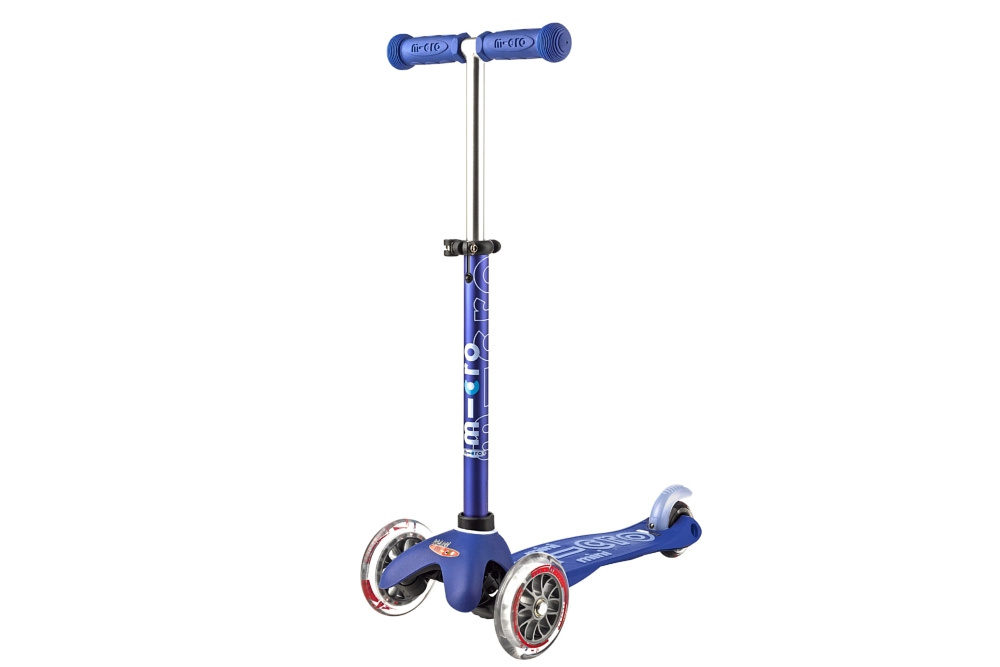
Micro Mini Deluxe Scooter
Reasons to buy
Reasons to avoid
They're not cheap, but if the average school run is anything to go by, the Micro Mini Deluxe is the absolute best scooter for a child aged 2-5 to be rolling out on.
It weighs in at 1.9kg, making it easy for little ones to move around. The handlebar can be adjusted from 43cm to 59cm, and the max weight is 35kg.
The stem is anodised to protect against corrosion, there's a strong rear brake and a raised silicone grip on the deck.
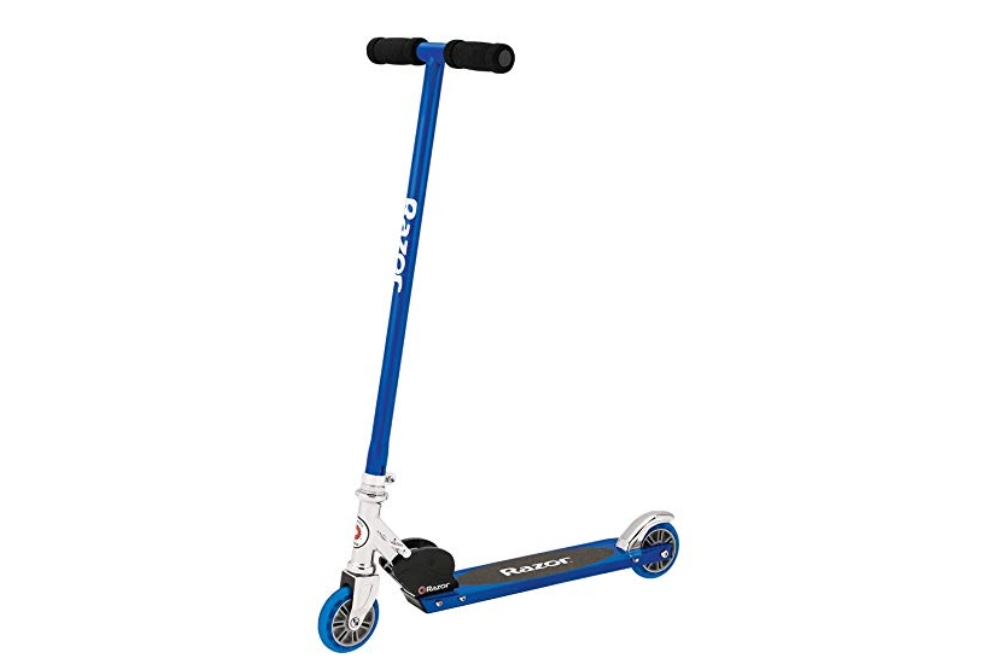
Razor S Sport Scooter - Real Steel
Reasons to buy
Reasons to avoid
As kids get older, they strive to go faster and resilience may shoot up in your list if priorities.
This model from Razor weighs 2.76kg and can support a weight of up to 100kg. It's got an aluminium deck, with a steel t-tube which will robust. TheUrethane wheels are puncture proof and you get Razor's clever rear fender brake.
Mongoose Menace Scooter - £64.95 (age 8+)
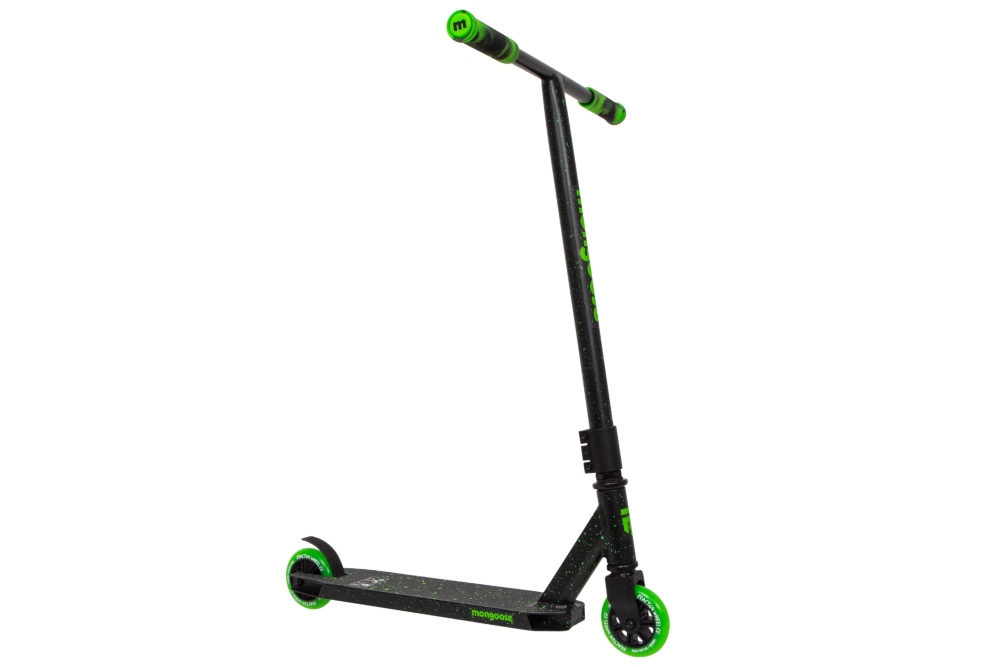
Mongoose Menace Scooter
Reasons to buy
Reasons to avoid
Mongoose is known for its BMX bikes, and with this one, you're looking at an entry level stunt scooter which will suit kids taking small steps into the skatepark.
The fork is threaded steel, with a junior sized 'Hollowbox' deck which helps get the weight down to 4.16kg and the triple collar handlebar clamp uses three bolts.
There's a steel Flexbrake, and the wheels are 100mm with a Nylon core.
Parenting journey with scooters
Tech writer Simon Smythe bought scooters for both of his children, opting for the top end Micro brand. Here's his experience...
A cycling parent’s masterplan for their kid to win the Tour de France generally doesn’t involve a scooter. In their head kid swaps buggy for balance bike at around age two, learns to pedal a proper bike at around four, goes through the wheel sizes from 14in through to 24in and then races and wins as a junior. Next stop the Grand Départ.
But what if kid points pudgy hand out of buggy at slightly older kids whizzing past on scooters and announces: “Want one of those...”?
The thing about scooters is that they’re cool – they’re like skateboards with handlebars. Kids scoot them with attitude. They look more rebellious than kids on balance bikes. They can go scarily fast and then stop and slouch over the bars like mini James Deans (minus the cigarette, hopefully).

So I put my vicarious Tour de France masterplan on hold, tried to stay calm, took a deep breath and started researching scooters. It looked like Micro were the scooters to have – the ones that other brands seemed to be copying. They’re nicely designed, well built, lightweight and less clattery than the cheaper imitations. And yes, they look the coolest. That deep breath was necessary because they’re not cheap. The Micro Mini Deluxe that we bought now goes for £82.95.
Both of my kids loved scooting – although the Mini Micro has three wheels it still requires balance and coordination to scoot it and steer it – both of which come in useful in grown-up cycling – and it has a brake over the rear wheel so that they can learn for themselves when they’re going too fast.
All kids get up out of the buggy with a need for speed as well as a burgeoning desire for independence and arguably a scooter can give them both of those more easily and more safely than a balance bike.
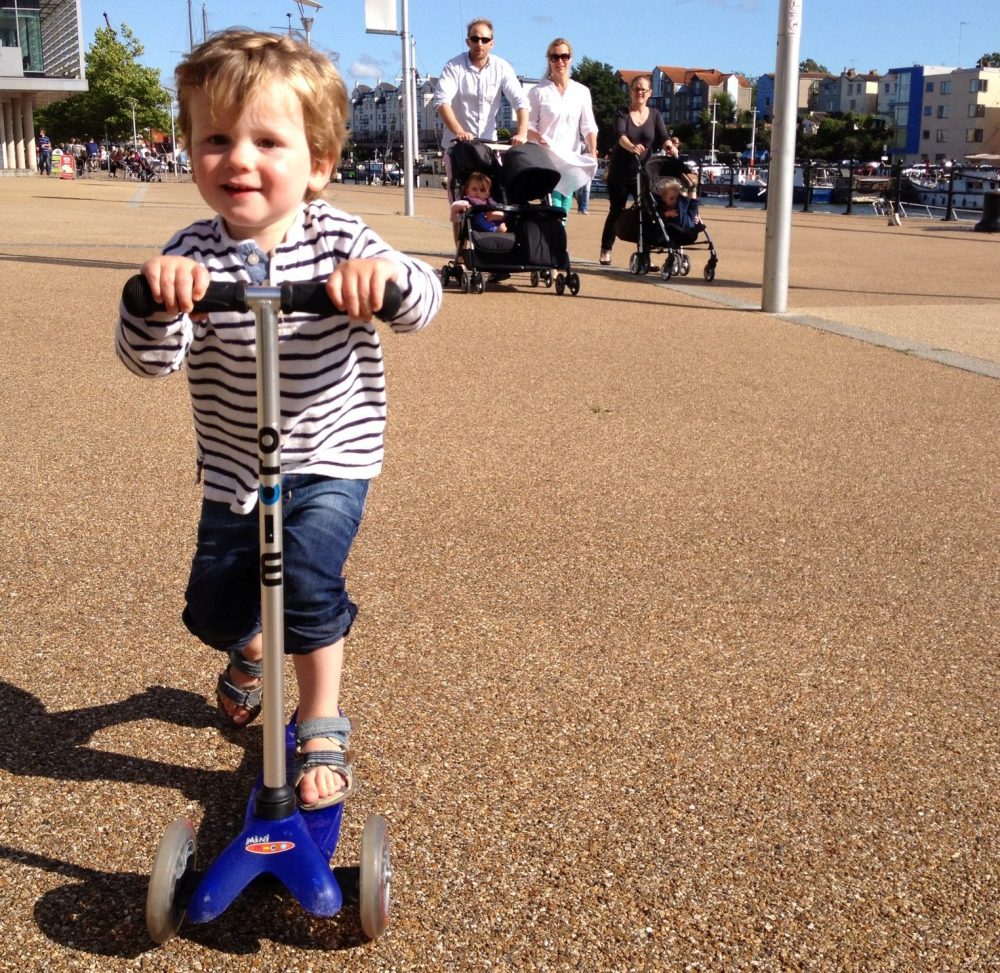
I was relieved to discover that my kids loving their scooters didn’t preclude learning to ride balance bikes and then proper pedal bikes. But aged eight and six they still love their scooters having graduated to two-wheel Micro Sprites, and will still use them to go down to the shops rather than walk or cycle, and the fact is they’re more practical than bikes for that.
So although most of the time they would prefer to be headed for Redhill town centre rather than the Champs-Elysées I will keep telling myself there’s still time for them to become the next Brad…
Scooters and protective clothing
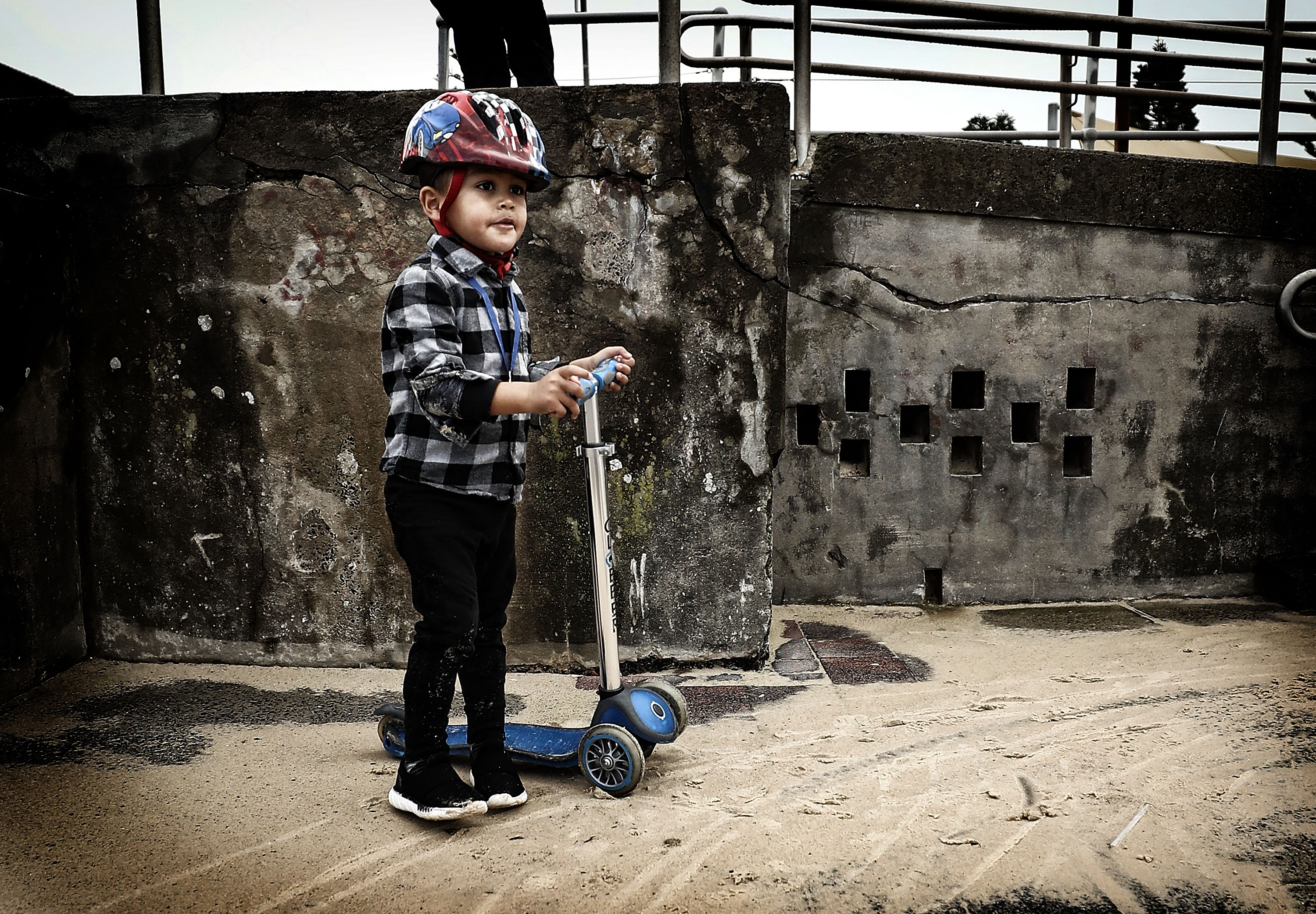
TheThe Royal Society for the Prevention of Accidents (RSPOA) suggests that when buying a scooter for a child, "parents should consider also purchasing a helmet (a cycle helmet is probably best), knee and elbow pads and wrist protectors."
We've rounded up the best kids' bicycle helmets here.
RSPOA also provides more advice on where scooters can and should be used and how much supervision is required.
Scooter accessories
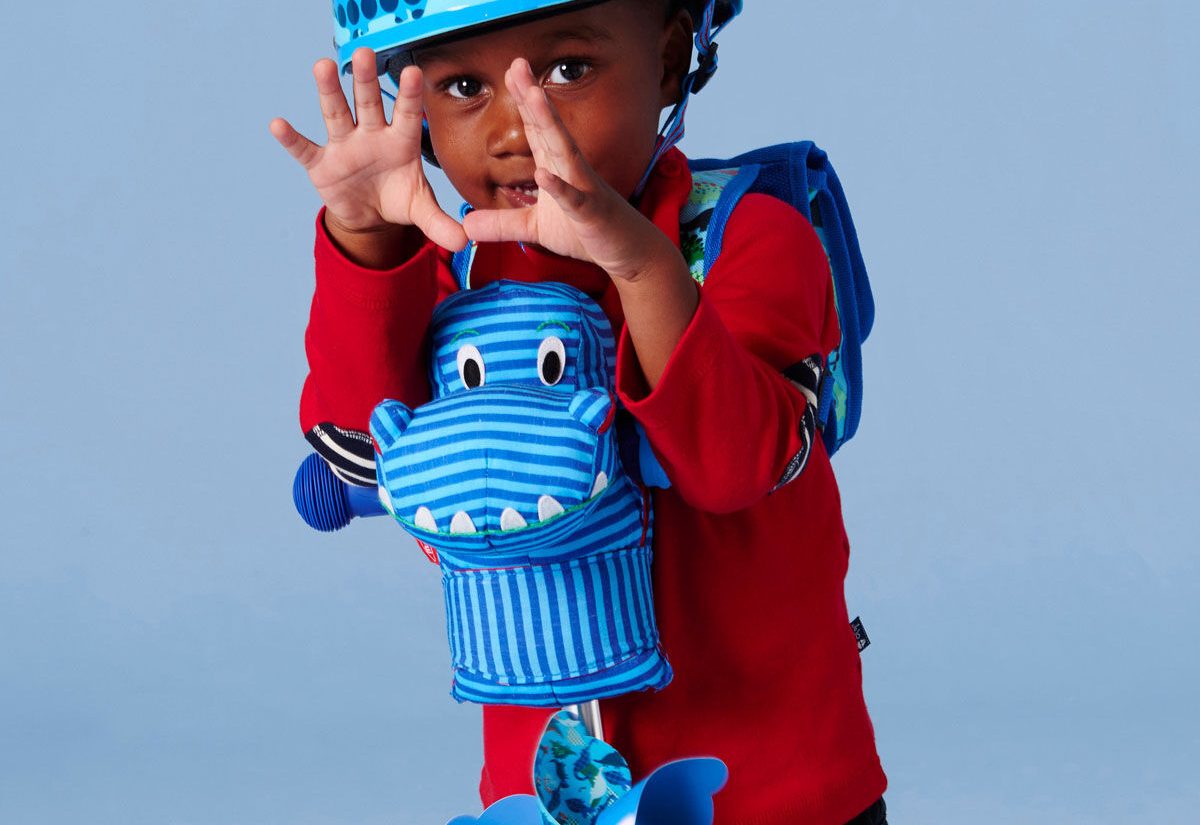
Scooter accessories - like the Micro Scooter Dino Head - are incredibly popular ways for kids to personalise their scooters, adding even more fun to the proceedings.
Options include character heads for the handlebars, streamers, stickers and flashing wheels to add colour and character.
There are practical options too - like matching backpacks and helmets, bells, even water bottles that can attach to the scooter for longer trips out.
Adult scooters
Anyone commuting in a major city will likely have seen scooter commuters.
Riding a bike on the pavement over London Bridge would be against the Highway Code (Section 72) which forbids 'carriages of any description' on the footpath.The jury is out on whether scooters count as carriages - and they're quicker than walking. As a result, quite a few adults can be seen scootering along, and even jumping on the tube with a folded kick machine.
Obviously, adult scooters need to be able to carry more weight than kids' models, the handlebar must be higher and they'll need to be more robust since grown-ups are likely to travel further.
As in kids' scooters, prices vary dramatically and how much you should spend depends upon your needs.
At the lower end, there's the EVO+ Commuter Scooter (buy now at Halfords for £49).
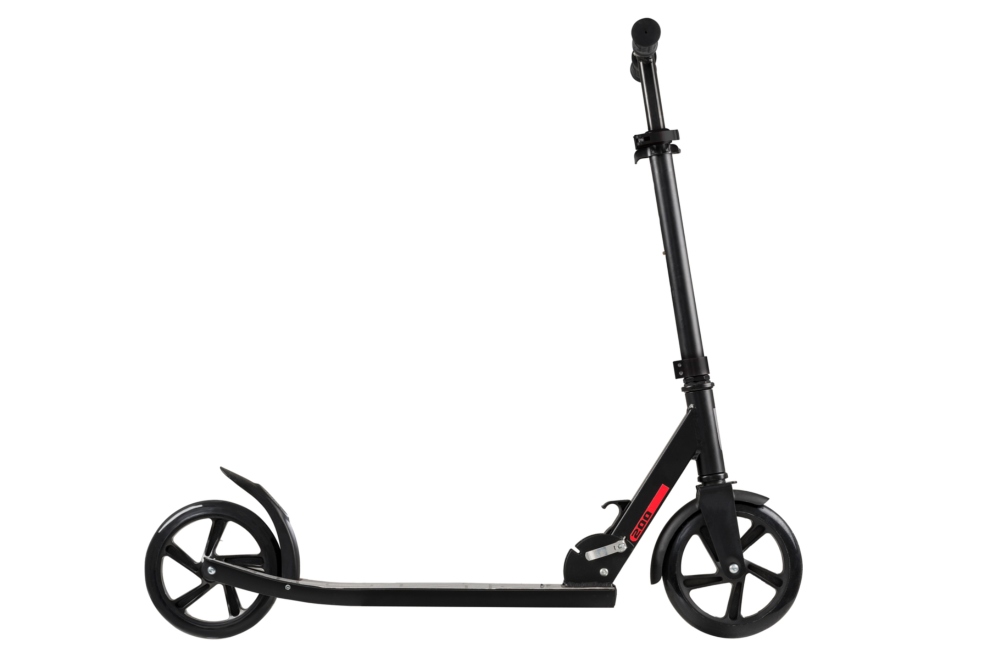
This weighs 5.19kg and comes with 200mm wheels, so it's suitable for kids over eight as well as adults. The handlebar can be tailored up to 100cm and the max weight is 100kg. There's a rear brake and the handlebars and footplate are aluminium.
However, if you want to spend more, there's models like Micro's suspension scooter.
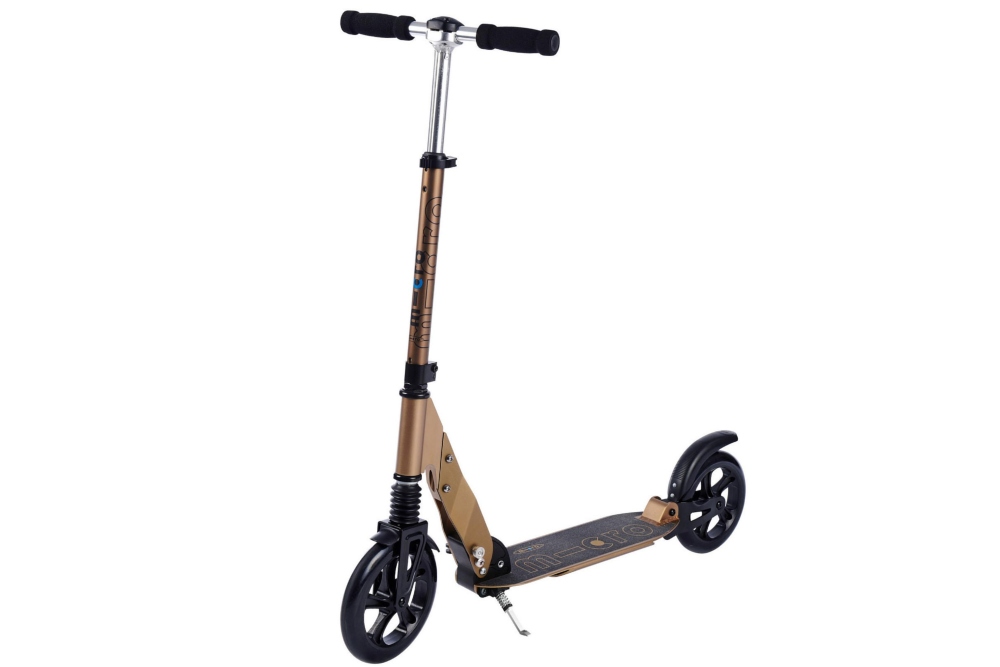
The hadlebar can be adjusted from 84 to 106km and the weight limit is also 100kg with 200mm wheels. Extra features include built in suspension for comfort - whilst the solid PU wheels mean punctures are a worry of the past.
If you're happy to pay more, there's options like the Swifty Scooters SwiftyOne MK3, at £599.
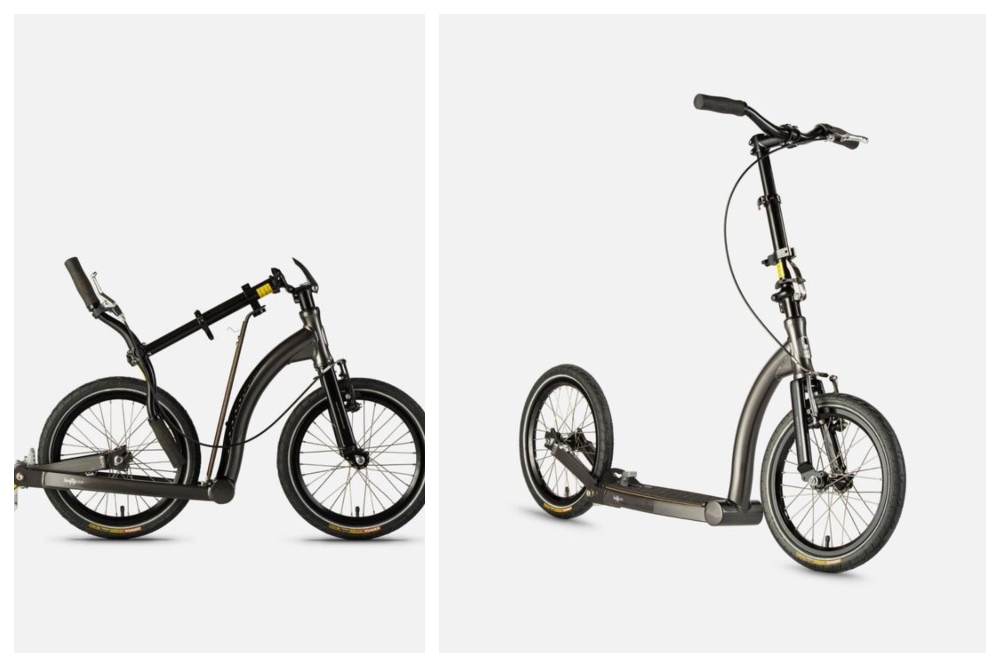
This model weighs in at 8.3kg but comes with air filled tyres (pneumatic) which will be considerably more comfortable, and the handlebar can be raised to suit a rider up to 6'5".
Braking comes from a Tektro V-brake at the front and rear aluminium pedal at the rear. The fork is steel, foldable frame is aluminium and max weight is 150kg.
Electric scooters
Electric scooters could provide another answer to road congestion, and one with arguable a few less barriers to entry than riding an electric bike. However, they're currently limited by the fact that they can't be legally used on either roads or footpaths.
This could be set to change. In March this year Transport Minister Jesse Normal said he would "look quite closely" into a way of allowing them to be used on the road.
“We’re going to look quite closely at what the wider environment is for a lot of these different vehicles. How these things might be either permitted or licenced or regulated to go on to the road, or other forms of land,” he said.
Like electric bikes, electric scooters vary tremendously in battery life and weight. Top end models with have disc brakes at front and rear.
For those who don't want to shell out close to £1,000, there's the hugely popular Razor E300 - suitable for children over 13 and adults.
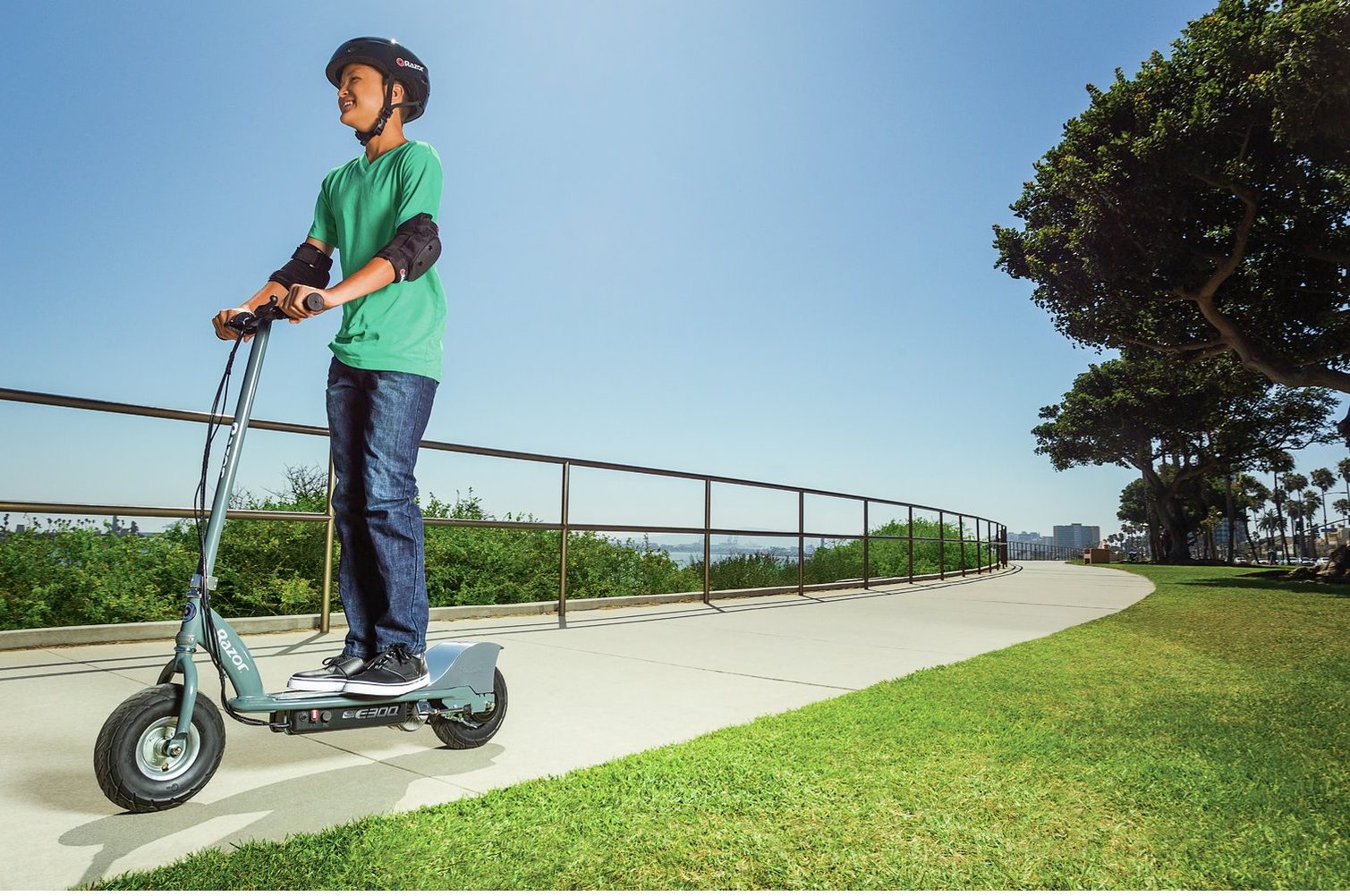
The E300 travels up to 15mph/25kph and uses a chain driven motor plus a run time of 40 minutes.
The tyres are rubber with tubes (pneumatic) which will be more comfortable than the solid tyres on many non-powered scooters.
The unit itself weighs 20kg, max weight is 100kg, and power comes from two rechargeable 12 volt batteries.
If you're looking for something for longer journeys, then check out something like the SwiftyZERO-e, at £1239.

This comes with 16 inch pneumatic (Kenda tyres with inner tubes) wheels which will roll comfortably, and provides a 250watt push thanks to a hub motor. The max speed is still 15mph/25kph but a full charge will last 4 hours or 10 miles thanks to the 36v lithium ion battery. The whole package weighs 12.4kg and you get Tektro rim brakes front and rear.
The latest race content, interviews, features, reviews and expert buying guides, direct to your inbox!
Michelle Arthurs-Brennan the Editor of Cycling Weekly website. An NCTJ qualified traditional journalist by trade, Michelle began her career working for local newspapers. She's worked within the cycling industry since 2012, and joined the Cycling Weekly team in 2017, having previously been Editor at Total Women's Cycling. Prior to welcoming her first daughter in 2022, Michelle raced on the road, track, and in time trials, and still rides as much as she can - albeit a fair proportion indoors, for now.
Michelle is on maternity leave from April 2025 until spring 2026.
